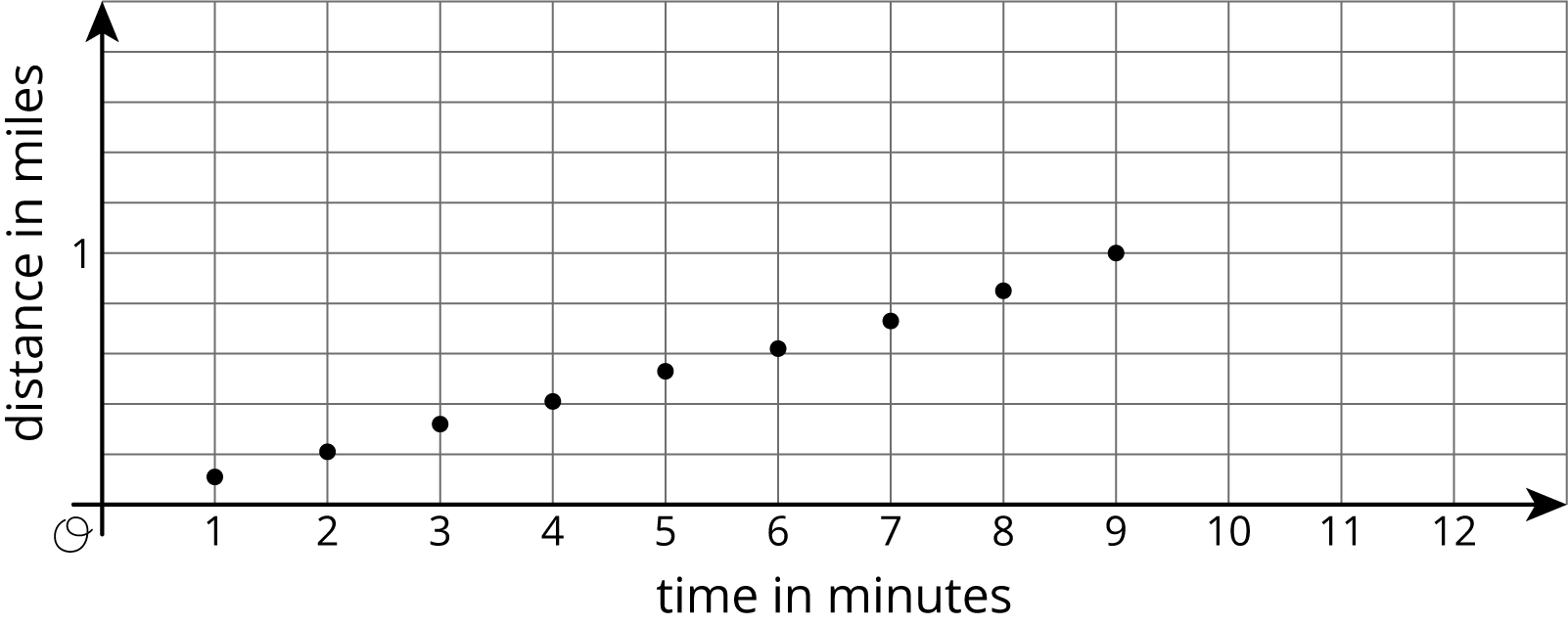Lesson 7
Connecting Representations of Functions
Let’s connect tables, equations, graphs, and stories of functions.
Problem 1
The equation and the tables represent two different functions. Use the equation \(b=4a-5\) and the table to answer the questions. This table represents \(c\) as a function of \(a\).
| \(a\) | -3 | 0 | 2 | 5 | 10 | 12 |
|---|---|---|---|---|---|---|
| \(c\) | -20 | 7 | 3 | 21 | 19 | 45 |
- When \(a\) is -3, is \(b\) or \(c\) greater?
- When \(c\) is 21, what is the value of \(a\)? What is the value of \(b\) that goes with this value of \(a\)?
- When \(a\) is 6, is \(b\) or \(c\) greater?
- For what values of \(a\) do we know that \(c\) is greater than \(b\)?
Problem 2
Elena and Lin are training for a race. Elena runs her mile at a constant speed of 7.5 miles per hour.
Lin’s total distances are recorded every minute:
| time (minutes) | 1 | 2 | 3 | 4 | 5 | 6 | 7 | 8 | 9 |
|---|---|---|---|---|---|---|---|---|---|
| distance (miles) | 0.11 | 0.21 | 0.32 | 0.41 | 0.53 | 0.62 | 0.73 | 0.85 | 1 |
-
Who finished their mile first?
-
This is a graph of Lin’s progress. Draw a graph to represent Elena’s mile on the same axes.

-
For these models, is distance a function of time? Is time a function of distance? Explain how you know.
Problem 3
Match each function rule with the value that could not be a possible input for that function.
Problem 4
Find a value of \(x\) that makes the equation true. Explain your reasoning, and check that your answer is correct.
\(\displaystyle \text-(\text-2x+1)= 9-14x\)